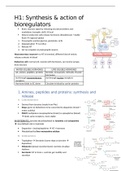Samenvatting
Samenvatting Comparative endocrinology (G0G49A)
Want to know more about hormones in animals? You found the best summary for the course Comparative endocrinology! This summary depicts all topics discussed in the lectures. I scored a 17/20 by learning this.
[Meer zien]



